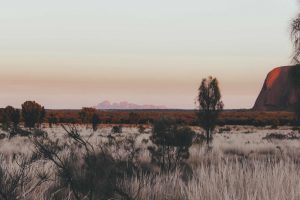Exploring the impressive Uluru in the Australian Outback
Exploring the impressive Uluru in the Australian Outback
–
After spending a little bit of time in the outback and the MacDonnell Ranges (read my article) and after driving along the Stuart Highway to the junction to Uluru, Olgas and Kings Canyon, we decided to drive to Ayers Rock first. In contrast to the Stuart Highway, the road to the Uluru feels like a really small attached road partly including a few roadworks. You have to drive this same road all back again if you want to go to Kings Canyon or back to the Stuart Highway if you don’t have a 4 wheel car.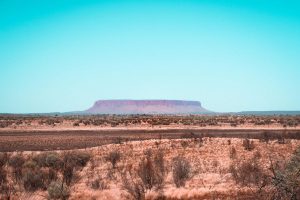
Mt Connor
Confusion: Mt Connor
I had read about seeing the Mt Connor on the horizon on the way to Ayers Rock and the similarity between Mt. Connor and the actual sanctuary of the Aborigines. But if you take a second look, you can see that it is pretty angular on the upper hand – besides it is less round than Uluru. When we flew the drone, an Australian (!) woman really asked us if it is the Uluru we are looking at. 🙂 So don’t mistake a for b and don’t drive back home without actually seeing the real Uluru.xD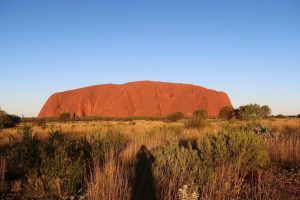
The Ayers Rock / Uluru
First Impression: overwhelming
We were driving and driving through the big outback and suddenly Uluru appears on the horizon. I think everyone has seen pictures of the mountain, but standing in front of it is absolutely amazing and overwhelming. The red stone shined red and there were a lot of washed out caves, furrows, and broken-down stones. From a distance, the Uluru looked even more impressive than coming right up to it. The national park includes the Uluru/Ayers Rock and the Kata Tjuta/Olgas, there is a small entrance fee to pay at a barrier, it costs 50 Dollar for three days. We continued the way to the Uluru´s info, where we got a little booklet showing all the trails and necessary information, like where to go for sunrise or sunset with the best view. There are a few beautiful places right up to the Uluru for sunset or sunrise, where you can watch the red colors changing with the sunlight. The famous Sunset and Sunrise Area further away offer a nice view of the whole mountain. The national park was granted back to the Aborigines and today Aborigines and white people are working together. The info gave a lot of information about the art of the natives and their history and a movie was shown on a big screen.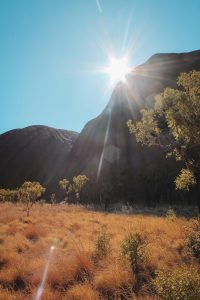
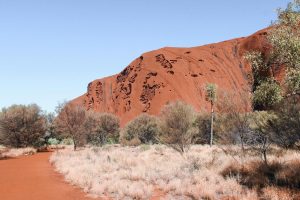 Uluru trail
Uluru trail
After that we walked all the way around the mountain, this took us about 2,5 hours. Partly it was really hot in the sun even the month may isn’t part of the hottest period. You should carry on enough water and sunscreen! The way led us all around the red rock, sometimes closer to the mountain along little caves in the mountain, sometimes further away. It is an absolutely beautiful trail and on some sections, we were mostly alone at noon. This is probably because the main season starts in June/July (coldest season). On our way we found a little 15 cm snake laying in front of our feet, enjoying peacefully the hot sun without any movement. The trail also crossed a waterhole, but you cannot swim in there. Furthermore, there were a few washed-out caves you can walk in, the Aborigines used to live in there in the past. As well there are a lot of stories and quotes about the Aborigine culture on the wayside.
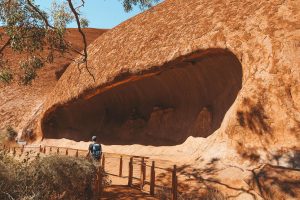
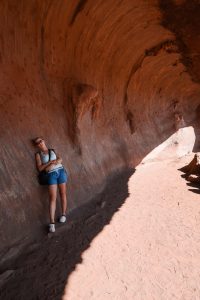
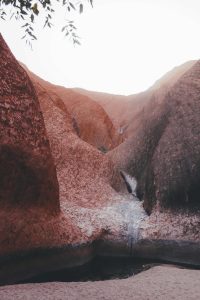 Importance of the Uluru
Importance of the Uluru
The red rock was named „Ayers Rock“ in honor of Sir Henry Ayers but the aboriginal name is “Uluru”. It is located in the “Uluṟu-Kata Tjuṯa National Park” and is listed as a UNESCO World Heritage Site. The iconic rock measures 3km by 2km and are 348m high. The age of Uluru is approximately 550 million years and it emerged from the even older Amadeus Basin. The sandstone (“Akrose”) shimmers in different shades of red, depending on the position of the sun. The Pitjantjatjara Anangu, the Aboriginal people of the area, have been there for more than 10.000 years. Uluru is sacred to them and it is an important part of the Aboriginal Dreamtime stories. Parts of the stories are documented in ancient rock paintings. In 1920 part of the “Uluṟu-Kata Tjuṯa National Park” was declared an Aboriginal Reserve. In 1985 the land was given back to the original owners, but the Australian government included a 99-year lease and access to climbing Uluru.
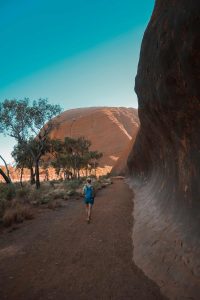
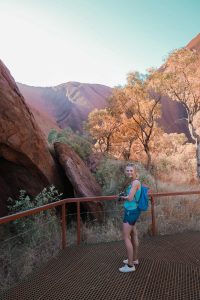
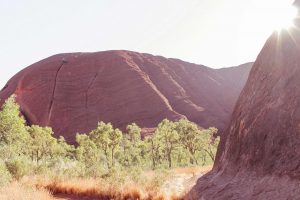 Climbing the Uluru? Please don´t do it!!
Climbing the Uluru? Please don´t do it!!
There is a trail to climb Uluru along a less steep way in the rocks. But please- think twice about climbing the rock or on the other hand if you want to honor the place with all of its history and charisma. The signs clearly ask for not climbing the mountain, because the hill is a sanctuary for the Aborigines. Unfortunately, the government cannot forbid it. To be honest with you guys, I cannot understand why I saw so many people force themselves up the mountain, with little kids nearly ready to fall. Water bottles were rolling down, plastic snack bags littered the mountain and I saw a lot of people who weren’t able to come down from overworking…Of course, I wanted to climb as well for a little little second, but I think it shows no respect at all for the Aborigines place. It is not about being on top of the hill, but about to experience the place as it was used by the natives. Furthermore, an Instagram photo from the top would cause a shitstorm – therefore you can simply stay on the bottom.;)
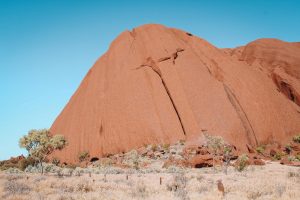
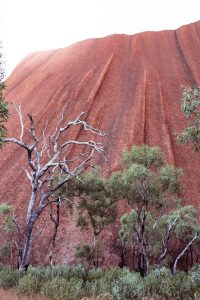
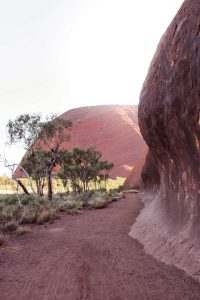 Sunset-Point Uluru
Sunset-Point Uluru
In the afternoon we drove to the sunset-point near the Uluru. From here you have a beautiful view of the whole mountain. The parking space was crowded soon, it is worth coming a little earlier. The sun was shining on the slowly changing mountain. The deeper the sun was standing, the more the hill changed to a glowing ball. The change in appearance is an incredible spectacle, documented by a lot of photographers. The contrast got stronger and the more the sun disappeared, the more grey the mountain looked like. Therefore keep going on with your time lapses ;).
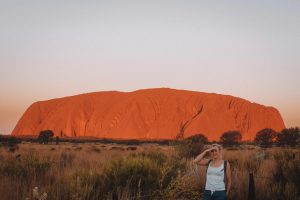
Camping near the Uluru
The camping area in front of the national park is the only overnight accommodation at this place. There are no free rest areas because they probably would be dirty soon with all the tourists coming here every day. The camping area is a bit crowded and loud. But we´ve still got a campsite without any reservation after sunrise for the same night (in the main season you should probably reserve!). The camping area even has a pool and a water tank to refill the camper with fresh water.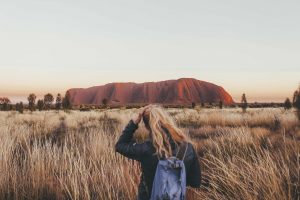
Sunrise – Point Uluru
Early in the morning around 5:30 am we started off driving to the sunrise area, to see the sun coming up with the best view on the Uluru. We drove really carefully because we didn´t want to hit an animal in the dawn. There already waited a few people at the viewpoint. A small trail passed several good viewing points, so we could choose a less crowded one. In the morning it is really cold (it was may). You should wear long clothes and a warm jacket! The rising sun casts beautiful shadows on the mountain and the Olgas appears far away on the horizon. The red tones are increasingly affected by higher sunlight. The Uluru is basically awakening – a great spectacle.Follow our journey on Instagram
